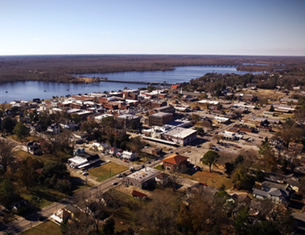Publisher's note: The author of this post is Sarah Curry, who is Director of Fiscal Policy Studies for the John Locke Foundation.
The question of whether our state government ought to subsidize historic preservation is distinguishable from the question of how government should deliver those subsidies. Unfortunately, these two issues have been lumped together by lawmakers when discussing the recent sunset of the historic preservation tax credits. Government at any level should not intervene in the historic-property business on economic grounds. But keeping certain properties from becoming blighted might well be a defensible function of local government.
January 1st 2015 was the last day for properties in North Carolina to claim the state's historic preservation tax credit, yet properties are still eligible to receive similar federal tax credits. Initially, the incentive was a dollar-for-dollar reduction of federal income tax owed, equal to 25 percent of the cost of rehabilitating certified historic structures. It was later reduced to 20 percent. Between 1976 and 1997, there were 689 projects that were completed using the federal tax credit in North Carolina.
North Carolina's historic preservation tax credit was created in 1998 as an addition to the federal subsidy. If a property qualified for the federal investment tax credit, then North Carolina would provide an additional 20 percent state tax credit for rehabilitations of income-producing historic properties, for a combined federal-state credit of 40 percent. North Carolina also offered a state tax credit of 30 percent for qualifying rehabilitations of non-income-producing historic structures, including owner-occupied personal residences. There is no equivalent federal credit for such rehabilitations. Since 1998, there have been 2,146 projects that have taken advantage of the joint state and federal tax credits.
During the 2000s there was a large number of textile, tobacco, and furniture plant closings across the state. In an effort to encourage reuse of these former industrial sites, lawmakers created a mill rehabilitation tax credit in 2008 with the intention that it would be used as an economic development initiative. If a property qualified for the federal tax credit, then North Carolina would also offer either a 30 or a 40 percent tax credit, depending on the county where the project was located. Because there is no federal credit for non-income producing historic structures, the state allowed a 40% tax credit if the project was located in the most distressed counties. The mill rehabilitation tax credit was available in lieu of (as opposed to in addition to) the state historic rehabilitation tax credit.
There is no justification for compelling state taxpayers to subsidize the preservation of historic properties in particular cities or towns. There is, however, justification for local taxpayers to chip in for renovating historic buildings that may, if left abandoned, endanger the structural integrity of neighboring properties or threaten public health and safety. That still doesn't mean that North Carolina ought to deliver these subsidies in the form of state tax credits.
The purpose of the tax code should be to raise revenue for core government services. It should not be used as a means to redistribute income, favor certain personal behaviors or discourage others, or force taxpayers to be in the economic development game. Higher tax rates discourage work, savings, investment, and entrepreneurship across the economy.
In addition, on-budget grant programs increase transparency and accountability. The selection process is an open one. Spending is clearly spelled out in annual budget documents, where it can be evaluated against alternative uses of the dollars, such as supporting public schools or building roads.
While the decision to let the tax credits sunset is a good economic one, the McCrory administration and some members of the General Assembly feel it is absolutely necessary to replace the state's historic preservation tax credit program with an incentive-like program. If elected officials choose to do so, then local governments, in cooperation with non-profit organizations, the private sector, and other community-based stakeholders, should set up historic-preservation grant programs at their discretion. Because virtually all of the potential benefits of a renovation project accrue to those who live, work, or sell goods and services in that community, it makes sense for any subsidies to flow from local property and sales taxes.
As a general principle, our state government should strive to keep the tax code clean, even at the expense of cluttering up the budget with grant programs. They should ensure that the process of filing and paying taxes is as easy as possible. Obtaining government grants, on the other hand, should be challenging enough to separate the wheat from the chaff — and fully transparent from application to final report.
Source: North Carolina State Historic Preservation Office and North Carolina Department of Cultural Resources


























